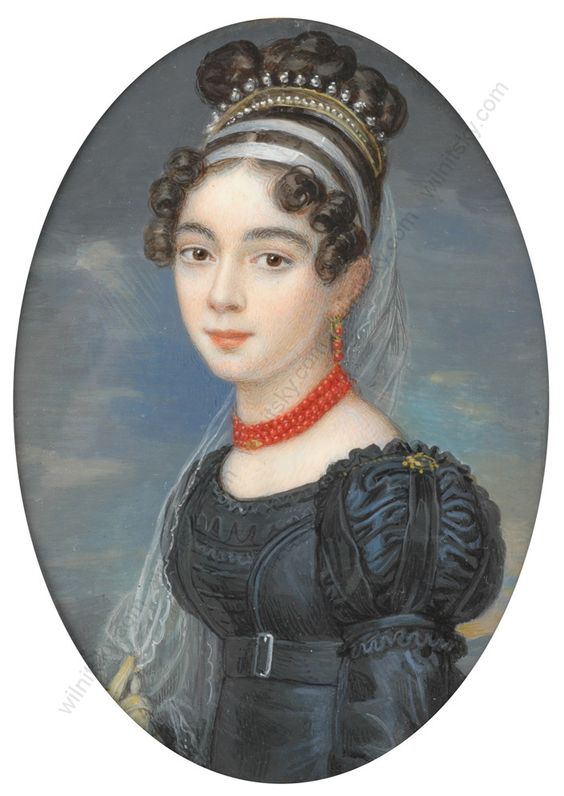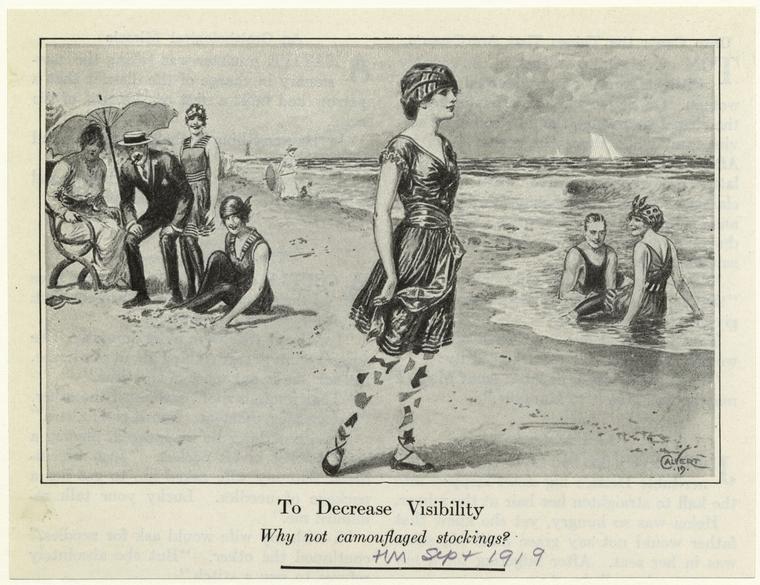The first challenge of the 2019 Historical Sew Monthly is Dressed to the Nines:
Make something fancy so you’ll be ‘dressed to the nines’ – whether its the full outfit, or a little accessory. Or look at the challenge in a different way, and make something from a year ending in 9 (find a portrait or fashion plate or mention to support the date), or even an item with 9 major design elements (9 buttons down the front, 9 tucks in a petticoat etc)
You can interpret this challenge in the most obvious way, and use it as a chance to show off a spectacular, glamorous, historical outfit where you are:
‘Dressed to the Nines’
(I don’t feel I really need to show you any inspiration images for that! I’m sure you have plenty of your own)
If you don’t have the time to make a whole garment (or don’t have one almost finished that you can complete) then you can:
Make a smaller part of a fabulous outfit:
A lace jabot?

Lace cravat in Bowes Museum, Northumbria. Venetian raised needleworked lace, made around 1675.
A reticule to go with an evening dress perhaps?

Bag (reticule) English or New England, Early 19th century, MFA Boston 64.692
Or silk stockings for court dress or formal dress? (my stocking pattern would work for men or women)

Court dress, 1907, silk, metal,Brooklyn Museum Costume Collection at The Metropolitan Museum of Art

Louis XIV and heirs with the royal governess, Formerly attributed to Nicolas de Largillière, now unknown, circa 1710
A fabulous turban?

Portrait of Queen Kamamalu from an etching, 1824-1830
Or some jewellery?

Attr. to Joseph Krafft, Portrait of Henriette Rottmann, 1820, via wilnitsky.com
Another option for this challenge is:
Make something from a year ending in 9:
Wikimedia Commons very helpfully has lists of major occurrences in art in each year, so you can just click through the ones ending in 9 for inspiration.
The Allegory of Good Governance was completed in 1339, and shows both noble and everyday dress:

Detail of Allegory of Good Government Artist Ambrogio Lorenzetti, 1338-39, Palazzo Pubblico, Siena, Italy, Fondazione Musei Senesi
Go 1369, with buttons all up the sleeves of your dress, a la Katherine, Countess of Warwick:

Effigy of Katherine, Countess of Warwick, died 1369
Or make her ruffled veil!
Or perhaps you’d prefer Margaret Van Eyke’s ruffled veil, from 70 years later. Or her wonderfully cozy dress? (I love 1430s-40s fashion. It just looks like elegant snuggies).

Jan van Eyke, Portrait of Margaret van Eyck, Groeningemuseum, Bruges, 1439
Queen Elizabeth, was, of course, always dressed to the nines, and while her full outfit might be a bit much to tackle without a lot of time to plan, her ruff, or cuffs, or glovers, are all fabulous.

Elizabeth I, Sieve Portrait, George Gower, 1579
Margarita Theresa’s famous portrait by Valezquez was supposed to impress her fiance (who was also her uncle (ick), just as her mother was the niece of her father (also ick) – which turned out to be famously problematic). Her dress is certainly impressive, and the addition of a muff, probably a present from the fiance, is quite charming.

Diego Velázquez, Infanta Margarita Teresa in a Blue Dress, 1659, Kunsthistorisches Museum, Vienna
110 years after Velázquez’s portrait of Margarita Teresa, another royal princess had her portrait painted to impress her future (and significantly less ick-inducing) fiance.

Marie Antoinette in a dress of chine a la branche, at the age of thirteen; by Joseph Ducreux (1769)
I’m pretty excited about this ‘years ending in 9’ thing, because it means I can include one of the most interesting and thought provoking portraits to come out of the 18th century as inspiration:

David Martin (1737—1797, Portrait of Dido Elizabeth Belle Lindsay (1761-1804) and her cousin Lady Elizabeth Murray (1760-1825), Scone Palace, Perthshire, Scotland.
This one is both dressed to the nines, and from 1809:

Full evening dress, June 1809, La Belle Assemblee
Your item doesn’t have to go on the outside. This fabulous and ridiculous fashion plate shows exactly the sort of padding that dandy’s wore in 1819. Thigh pads anyone?

The invention of aniline dyes help us to date some colours very precisely to the end of the 1860s, like this vibrant fuchsia dress from 1869-70.

Dress, Paris, France, 1869-1870, Vignon, Ribbed silk trimmed with satin, faced with cotton, brass, Victoria & Albert Museum, T.118 to D-1979
How about a perky ribbon trimmed hat from 1899?

Mode Illustree Pattern March 19 1899
Or Dazzle Stockings from 1919?

Dazzle stockings, Harpers Magazine, Sept 1919, NYPL Digital Galleries, PC COSTU-Bat-190
And for the final way to interpret the challenge:
Make something with 9 design elements:
@style_revolution_journal is a great student led instagram account sharing images from their project on the Journal de Dames et de Modes. Yesterday they shared these fantastic images of reticules taken from the plates, and I realised that many of the 4 sided reticules would end up having 9 tassels: 1 on the bottom point, 4 round the bottom sides, 2 on the top ties, and 2 on the handles.
Now I think my reticule needs more tassels…

@style_revolution_journal Journal de Dames, reticules 1797-1804
Or, make a crinoline with 9 wires:
Or a jacket or blouse with 9 buttons?

St. Louis Grays uniform coat with epaulets (1858 to 1860) Missouri Historical Society

Cotton gauze wedding gown, satin belt, cotton corset cover and petticoat (American), 1868, 2012-08-25 KSMF
Nine layers of ruffles on a skirt or petticoat?

1882 dress, cotton chambray with seersucker, Wayne State University Libraries
Or nine tucks?

Dress in two parts of linen and possibly silk, 1886, Abiti Antichi 165
Happy making!



I’ll share a link to an inspiration image myself because just yesterday I stumbled on a Czech portrait I like a lot but have no use for in my wardrobe – and it’s highly likely that it’s from 1859, based on the birthdates of the children in the family.
http://sbirky.ngprague.cz/dielo/CZE:NG.O_4799
youtube.comCheck out this link
https://www.youtube.com/watch?v=GSDDJrlJukM
It is a BBC programme about recreating Didos dress, how they did it and the research into Dido and the clothing worn in the painting. Really interesting!
I love that painting of Dido Elizabeth Belle! It’s like she’s photobombing her cousin 🙂
youtube.comThe painting of Dido Elizabeth Belle was featured in.a BBC programme called A Stitch in Time (S1, E4). They recreated Dido’s dress and delved into the background of the painting & the clothing.
https://www.youtube.com/watch?v=GSDDJrlJukM